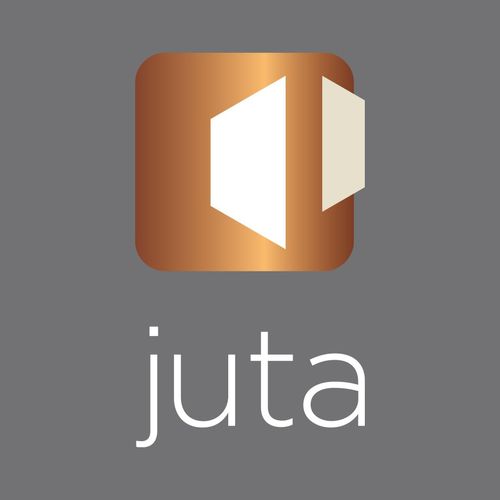- Home
- Products & Services
- About
- Blog
- Faq
- Contact Us
We had the exciting opportunity to interview Juta author Yathika Gowpall about her upcoming title, eMarketing: Marketing in a Digital World. This insightful book explores the challenges and opportunities created by digital transformation, offering valuable lessons and strategies for businesses looking to thrive in today’s fast-evolving digital landscape.

Juta: Could you provide an overview of the book and its primary focus on eMarketing as a subject area?
YG: Overall, the title, e-Marketing in a Digital World, is written explicitly for a South African audience, addressing the shortage of local literature on the topic. This book is designed to provide a comprehensive overview of eMarketing and is therefore written and illustrated understandably. The title addresses the challenges South African marketers face and provides guidelines for navigating an already challenging business environment. Current and future e-marketers will gain valuable insight to create a digital marketing strategy where web design and development, search engine optimisation, online advertising, e-commerce, email marketing, mobile marketing, social media marketing and web analytics are included.
Juta: The COVID-19 pandemic accelerated digital transformation in many organisations and catalysed the need for new skills and strategies for businesses to remain successful. What are the critical areas of eMarketing that can support businesses in this endeavour?
YG: eMarketing is a crucial tool for businesses to succeed in the digital age, as demonstrated during COVID-19 when organisations had to adapt to an unpredicted environment. Key focus areas include customer insights, automation, personalisation, analytics, reaching new customers, brand awareness, and driving sales and revenue. eMarketing tools and platforms generate vast amounts of data about customer behaviour and preferences, enabling businesses to make informed marketing decisions. They automate marketing tasks like email marketing, social media marketing, and paid advertising, freeing up resources for other tasks like product development and customer service. Personalisation and relevance also play a significant role in building stronger customer relationships. eMarketing provides detailed analytics to track campaign performance, identify areas for improvement, and optimise marketing strategies. It also helps businesses reach new customers, increase brand awareness, and drive sales and revenue by generating leads, converting leads into customers, and increasing customer lifetime value.
Additionally, a digital marketing strategy is much more affordable than its traditional counterpart. Considering that the Covid period was an economically challenged time and that many businesses are struggling to recuperate from it, a digital marketing strategy would not only reach more consumers but also fit any restrained budget.
Juta: In the context of South Africa, what are some unique challenges that businesses encounter in the field of marketing, and how does the title address these challenges?
YG: In South Africa, several considerable challenges exist within the marketing domain. For this reason, the textbook has unpacked these challenges in some depth to contextualise the title more appropriately.
A particular challenge is reach which is one of the key factors influencing SA businesses due to the dispersed nature of consumers. Think about outlying areas such as the Northern Cape. Nearly everyone these days has a smartphone, and nearly every corner of the country has Wi-Fi reception, or at least access to data via their phones. With this, businesses can reach many consumers at the same time with their digital strategies via a plethora of digital platforms such as websites, social media, in-game advertising and many more which this book covers well.
Other challenges may be present in creating and delivering marketing messages that resonate with the entire target audience since further consideration should be given to diverse languages and cultures. This title is therefore very specific in how digital tools can be used both in isolation and as part of an overall strategy to address customers effectively.
Additionally, a further constraint is the limited skills base of marketing professionals which makes it difficult for businesses to find the talent they need to develop and execute successful marketing campaigns. This book is therefore aimed at bridging the gap between the knowledge, skills and practices of marketers.
Juta: Can you share specific examples from your textbook that illustrate how effective eMarketing contributes to enhancing value for businesses operating in South Africa?
YG: Each chapter demonstrates the integrated knowledge and comprehension of an effective digital marketing strategy which includes plans for each channel and different touch points that are aligned with business objectives. The e-commerce chapter raised some thought-provoking discussion points to kick-start students' thinking around the strategic implication of factors such as the COVID-19 pandemic and further how e-commerce may enhance the practices of businesses in South Africa. The chapter on web analytics includes the evolution of web analytics which is particularly useful in helping students frame their thinking of how analytics has always been part of the marketing strategy and therefore holds value for businesses in the wave of eMarketing. Within the broader context of this book, the use of local cases and examples enhances the literature well enough for students to draw the connection. This distinct focus contributes to enhancing businesses in the South African context.
Juta: What inspired you to write this book and what gaps did you aim to fill in the existing literature?
YG: We live in a time of significant changes in the business world where the digital landscape continues to grow. Ideally, this trickles down into what students should be learning to adequately address this dynamic. For this reason, there is a fundamental change that is required from an educational perspective, that recognises these imminent complexities and draws on the capabilities of the digital marketing discipline to reflect how to respond to these transformations. Although the digital space has grown in leaps and bounds, the academic literature remains constrained. The availability of e-marketing textbooks is seemingly limited. There is a definitive need for localised textbooks. Many of the prescribed materials at universities and colleges alike, still rely on international, and specifically American-generated textbooks. These textbooks are also much more expensive than locally produced textbooks. Not only is the costing factor an advantage to students, but the examples and points of reference within the textbooks are localised which provides students with better examples for application in a context which they understand. This book aims to guide students on the world of e-marketing which they can use to effectively market online.
Juta: The emergence of AI tools such as ChatGPT has created quite a bit of disruption across industries, job roles and student education. How do you think AI will affect marketers in the future?
YG: AI together with its apparent variety and complexity has and will be pushing us to challenge the status quo. At the outset, I think it’s necessary to draw the distinction that AI supports Marketers and not that Marketers will be replaced by this tool. AI provides a new direction for marketers which I think can be a welcomed development. Although we live in Generation AI, the human element doused with creativity cannot and should not be replaced. AI is by and large already being used by marketers to create content for their digital marketing experiences. Platforms such as canva.com, ryter.me, vimeo.com, and imagine.art work well together to create authentic content for digital marketing strategies. AI is particularly useful in better engaging customers, automating tasks, and improving customer relationship management which can potentially add much value. in the future, AI can assist marketers to lean in on data analytics and the insights that this brings. Consider the use of Chatbots as an application of AI, or the ability to change a campaign in real time.
The AI platforms also sidelines the many copyright issues relating to images on the web, as AI platforms create authentic imagery for the digital creator to use in a digital marketing campaign.
AI is having a transformative impact on marketing, and its influence will only grow in the future. Marketers who embrace AI will be well-positioned to succeed in the digital age. As AI continues to develop, we can expect to see even more innovative and groundbreaking applications of AI in marketing in the future.
Juta: Businesses often struggle with balancing cost-efficiency and seeing optimal value from eMarketing initiatives. How does the book guide readers in achieving this balance, particularly in the context of South Africa's current economic challenges?
YG: This book is intended to develop the necessary skills to structure an effective digital marketing strategy that maximises the business benefits of data assets and technology‐focused initiatives in an integrated manner, which is coherent with the overall business strategy. One of the most advantaged points of digital marketing which is well referenced in this book, is its ability to provide in-app metrics at no extra cost to the platform owner. This eliminates costly research agency fees and expensive research projects. This is done in line with zooming into the goals and objectives of the business together with the budget. A lot of information can be scraped from the web that could provide campaign insights and consumer behaviouristics. Other tools such as search engine optimisation (SEO) and content marketing, can prove to be cost-effective in the long run. Other initiatives, such as pay-per-click (PPC) advertising, can produce faster results, but they can also be more expensive. There are also efficient digital platforms such as SEMrush that can be used to conduct campaign audits. Apart from that, there is also Google Analytics which is free and provides the business owner with a real-time dashboard of the performance of the website, consumer behaviour on the website, and purchase information. Thus, it is much more affordable. The balancing act between cost and efficiency is something that the authors have remained cognisant of in this title and therefore have framed content along the lines of finding this balance.
Juta: What key takeaways and practical insights can readers gain from the book, and how can these insights positively impact their businesses or fields of work?
YG: The book is not about getting students to just remember the content, but to engage meaningfully in a way that grows their confidence as future marketing practitioners. The intent behind this book is to take the theoretical understanding and mould it into practical skills. The team was deliberate in taking this approach when shaping each chapter. We believe that the skills and knowledge gained from this textbook will equip students to succeed in their digital journey. We would also like to encourage students and faculty members to engage in the activities, QR codes, revision exercises and case studies to benefit from the learning opportunities that the team has put together to be fully immersed in learning and teaching.
Juta: Publishing a comprehensive book is a significant endeavour. Could you share some of the most rewarding aspects of the writing process and the knowledge-sharing journey?
YG: This was an extremely rewarding experience both personally and professionally. I had the opportunity to work with esteemed individuals from the private and public sectors, industry experts and avid academics. The collaboration of the authors has been phenomenal in putting together a textbook that is both interesting and engaging in reflecting the constantly evolving nature of digital marketing. This has been just as much of a learning experience for me. On a more personal note, knowing that I am part of a project that may create a baseline for new thinking amongst the next generation of thinkers and practitioners is something that fills my cup. I also had the opportunity to reflect on my days as a student and use this insight to better approach this project.
Juta: What advice would you give to aspiring authors who are considering writing about emerging trends in eMarketing and the digital world?
YG: Go for it! You are instrumental in creating and educating new thinking and new practices. We have a responsibility as marketers and educational practitioners to ensure that students are well-prepared for an ever-changing world. Navigating this space isn’t at all an easy task, but it is certainly worth it. In short, I would say, start with a blank page, research, scroll, type, click, delete and then repeat. Take a leap of faith and trust in the process.
Juta: Beyond the academic sphere, how do you envision the book being utilised by businesses, industry professionals, and policymakers to drive change?
YG: This book can be used by various stakeholders. The book addresses two primary audiences with students being the primary audience of course and secondly other stakeholders. Authors have maintained this double focus and therefore curated content in a meaningful way that is both easy to understand and applied.
This could also be used as a baseline guide, especially for entrepreneurial startups that do not have the capital layout that bigger business has. Unfortunately, a lot of business owners and entrepreneurs still think about marketing in terms of employing salespersons and traditional marketing avenues. The traditional marketing avenues are costly and only reach a few geographically centred consumers. Digital marketing expands beyond all borders and with the right algorithms in place, any business can reach a hundred-fold more consumers than traditional marketing.
Juta: Looking ahead, do you have plans for further publications or updates to your existing book to keep up with the evolving digital landscape?
YG: I am very fortunate to have worked with a team that doesn’t fall short of amazing and has been brave enough to walk this journey with me. So we will be updating this title as often as necessary in addition to the very many projects that are in the pipeline. We are committed to providing cutting-edge publications that reflect an ever-changing discipline. The idea is to shift students' thinking from textbooks as being a major investment of both their time and attention towards enhancing their overall experience with content that is relatable to the context of daily life. I hope that this book and the upcoming titles will be enjoyable, informative and valuable resources in navigating Marketing in the digital world.
Unlock the future of marketing with Yathika Gowpall’s eMarketing: Marketing in a Digital World and other must-have marketing titles! Explore the latest strategies and insights that will elevate your business—grab your copy here: https://bit.ly/3AJPbNu

Kagiso Tiso & Kagiso Media Fraud Hotline: 0800 21 25 83


